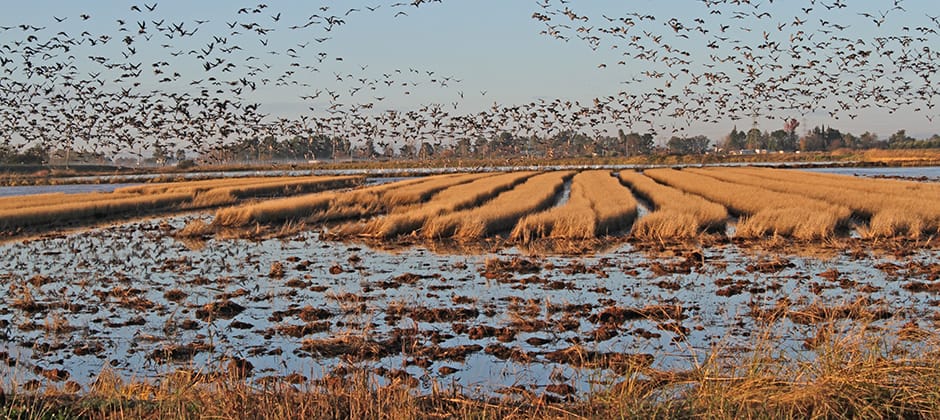Share this article
Finding the middle ground for aviation safety and waterfowl
The U.S. Fish and Wildlife Service has recognized “the loss, degradation and fragmentation of migratory bird habitat” as potentially the largest single threat to migratory birds. Human activity contributes to the loss, compounded by climate change.
California’s Central Valley serves as a prime example, where agriculture and urbanization has covered most of the region’s wetlands, riverbanks and grasslands. The valley is annually the wintering grounds for an estimated 5 million to 7 million waterfowl and hundreds of thousands of other water-associated birds. Concerns about habitat loss in the valley were voiced as early as the mid-20th century.
Conserving or restoring habitat throughout the annual cycle can make a difference, and California’s Department of Fish and Wildlife has been doing that for 25 years in its Private Lands Incentive Programs. Additionally, a new program approved last year by the California legislature, the California Winter Rice Habitat Incentives Program (CWRHIP), will aid migratory birds without negatively impacting aviation.
CWRHIP was designed to encourage winter flooding of the Central Valley’s rice fields, which provide 75 percent of dabbling ducks’ energy needs and significant amounts for migrating shorebirds. Private landowners follow a plan developed cooperatively with state biologists and receive an incentive of $10 per acre. Fields will be flooded for at least 70 days, with properties enrolled for three years.
The valley also is home to the 23,000-acre Beale Air Force Base, whose aviation assets are vital to national security by providing reconnaissance, surveillance and intelligence service. But Beale is also surrounded by rice and other fields raising bird strike concerns. Recognizing the major impact of waterfowl as an aviation hazard, representatives of the U.S. Air Force and Wildlife Services worked with the CDFW to identify a middle ground that would aid waterfowl and protect aviation. Subsequently, the CWRHIP was adjusted to establish buffer zones around military and international airports. Properties within five miles of the airports will be unable to use the incentive program. CDFW also named a contact for the military to consult with regarding the program.
Wildlife Services and our military partners are appreciative of the efforts by CDFW and state legislators to build a program that supports migratory birds while mitigating the potential for bird strikes, which is critical to military readiness and protecting military service members.
Header Image: Waterfowl use winter wetlands in California’s Central Valley. ©California Department of Fish and Wildlife








